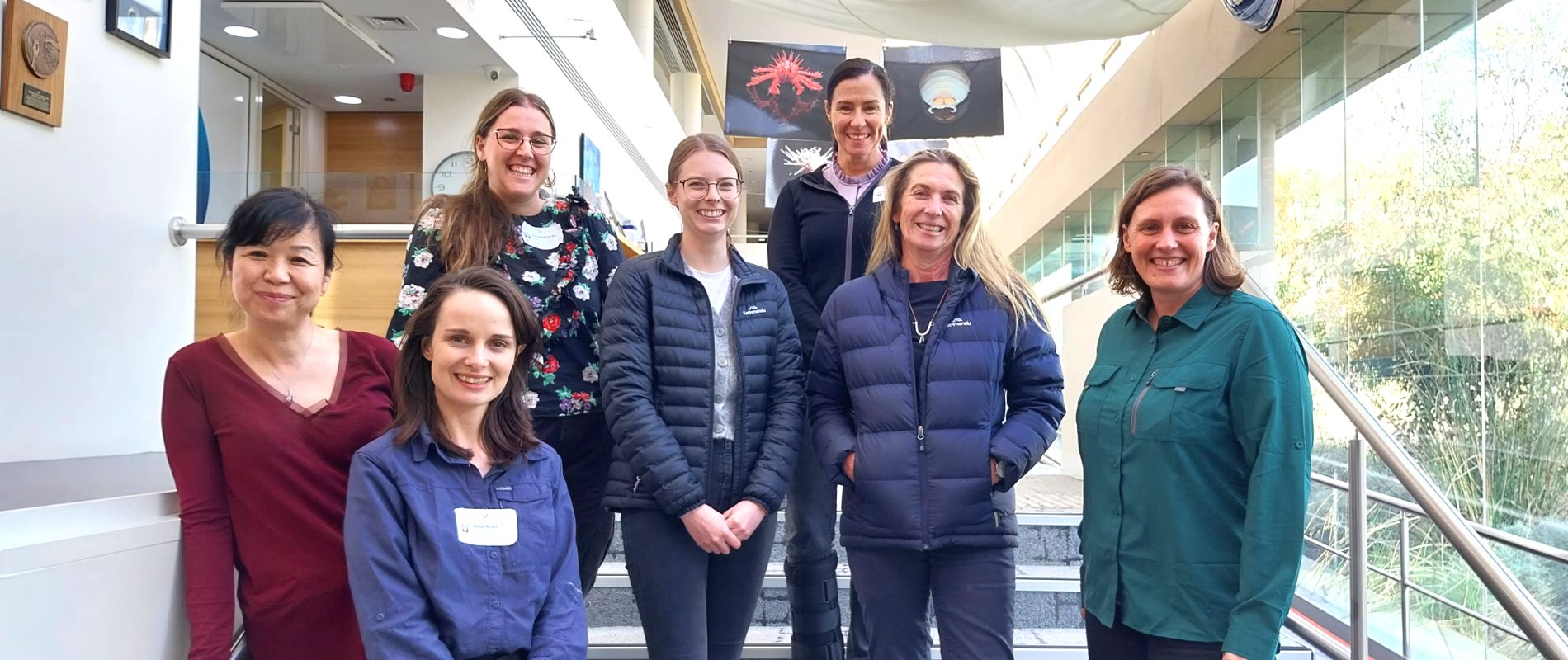For ANU plant biologists Dr Annamaria De Rosa and Dr Samantha McGaughey, touring a Tasmanian salmon farm is not a regular day in the office.
The two researchers from the ANU School of Research Biology recently travelled to the southern state as part of a joint ANU-CSIRO project to develop technology to harvest valuable nutrients from wastewater.
They were joined by fellow ANU plant scientist, Associate Professor Caitlin Byrt, and colleagues from CSIRO (Dr Cathryn O’Sullivan, Dr Maja Arsic, Dr Pollyanna Hilder and Dr Zongli Xie) with expertise in waste management and valorisation, aquaculture and membrane engineering to kick off the project which could have far-reaching benefits for Australia’s Atlantic salmon industry among many others.
Annamaria says the trip – which included tours of an aquaculture facility, where the salmon are grown, and a rendering plant, where the fish mortalities are processed for animal consumption – was pleasantly eye-opening and helped the team better understand the potential applications of their technology.
“The Tasmanian Atlantic salmon industry have a lot of on-land operations, so they’re dealing with a lot of water that’s recirculated. As fish are fed and grow they produce huge volumes of waste and that leads to nutrient-rich water which needs to be cleaned. The industry already has processes for cleaning water and removing contaminants and nutrients, but they have a lot of waste that needs to be managed. If we could use our technology to create something valuable from the nutritious and nutrient-rich waste, then it could benefit everyone.”
The Atlantic salmon industry is big business in Tasmania, contributing more than 90 per cent of the 84,000 tonnes of salmon produced in Australia each year, of which approximately 35 per cent is exported overseas [ABARES, 2022]. The domestic industry was estimated to be worth $1.36 billion last year, so innovations which could save producers time and money are hugely popular.
“They (industry) were super excited to meet us and we were excited to meet them. It confirmed we’re on the right path and gave us a clear understanding of the biggest issues they are dealing with.”
So, what’s next for the team?
“This trip has helped us to identify the first key nutrient to focus on (ammonia); now we get to do the cool science!”
If the technology proves successful for the salmon industry, there’s also the potential for it to be applied to the farming of different species of fish. But the team’s not limiting itself to fish, it’s also had interest from municipal waste companies, including ICON Water here in Canberra and the Gold Coast City Council.
“The cool thing about targeting a nitrogenous compound to start with is that municipal waste also has a lot of nitrogen, so there is a nice synergy between what we might develop for the salmon industry and what could be useful for municipal waste companies.”
There’s a lot of work to do, but the team is excited about where the next three years will take them.
“Being a part of the AFCP (ANU-CSIRO Agri-Food Collaboration Program) is of great value as new scientists. Bringing together our protein engineering skills, with the industry connections, and unique skills of our CSIRO colleagues is critical to the success of the project.
“We can’t wait to get started.”
